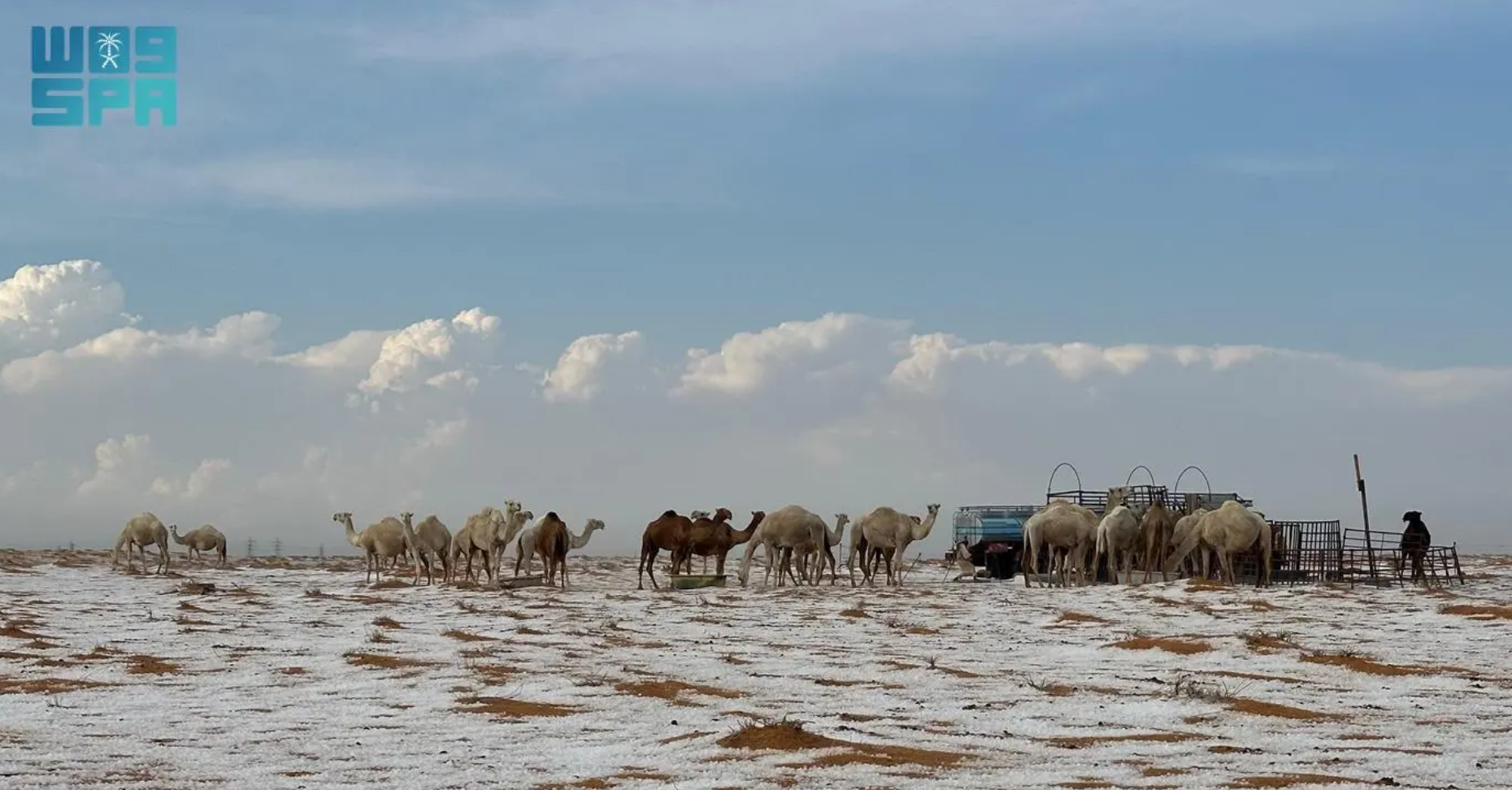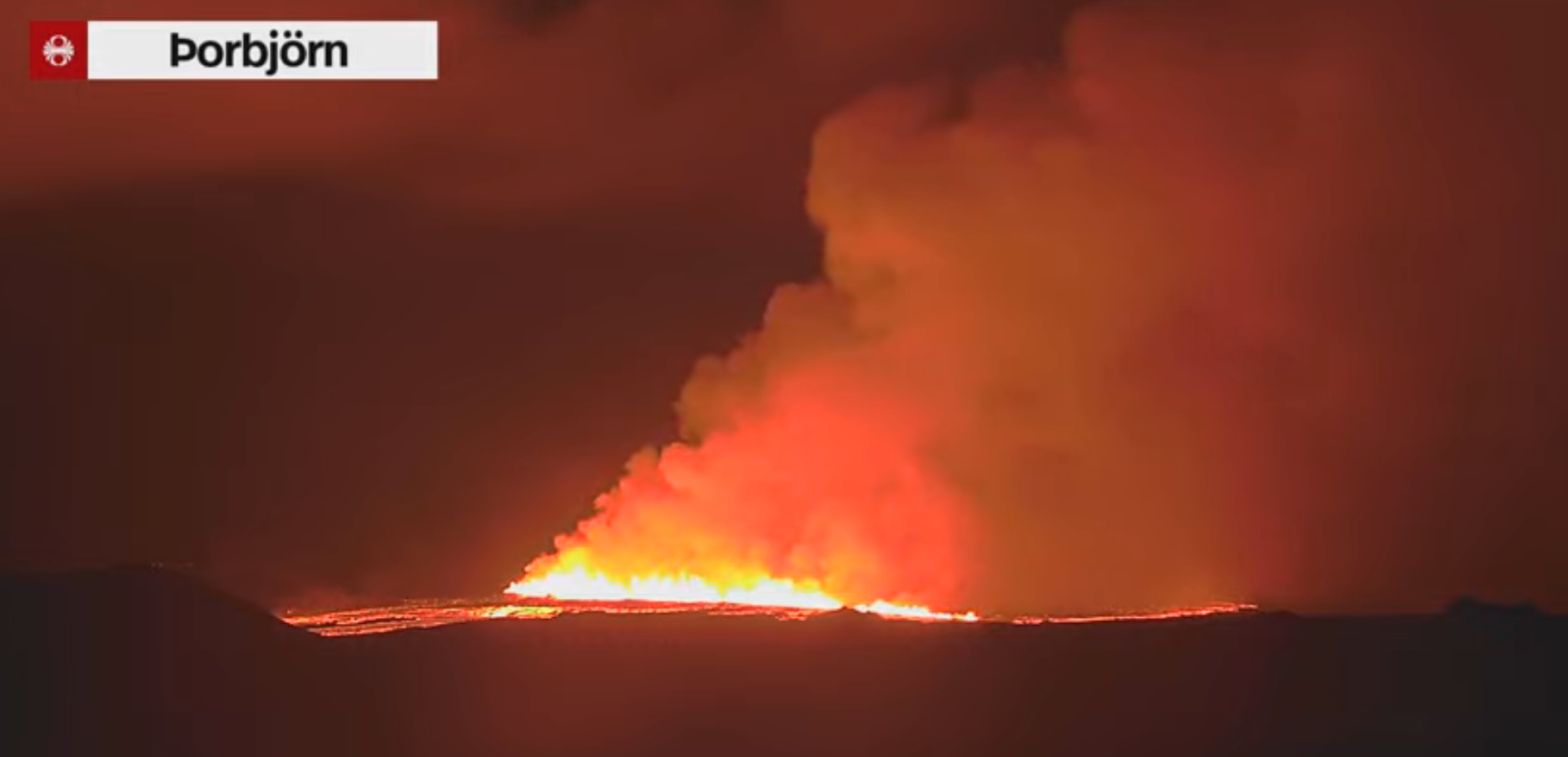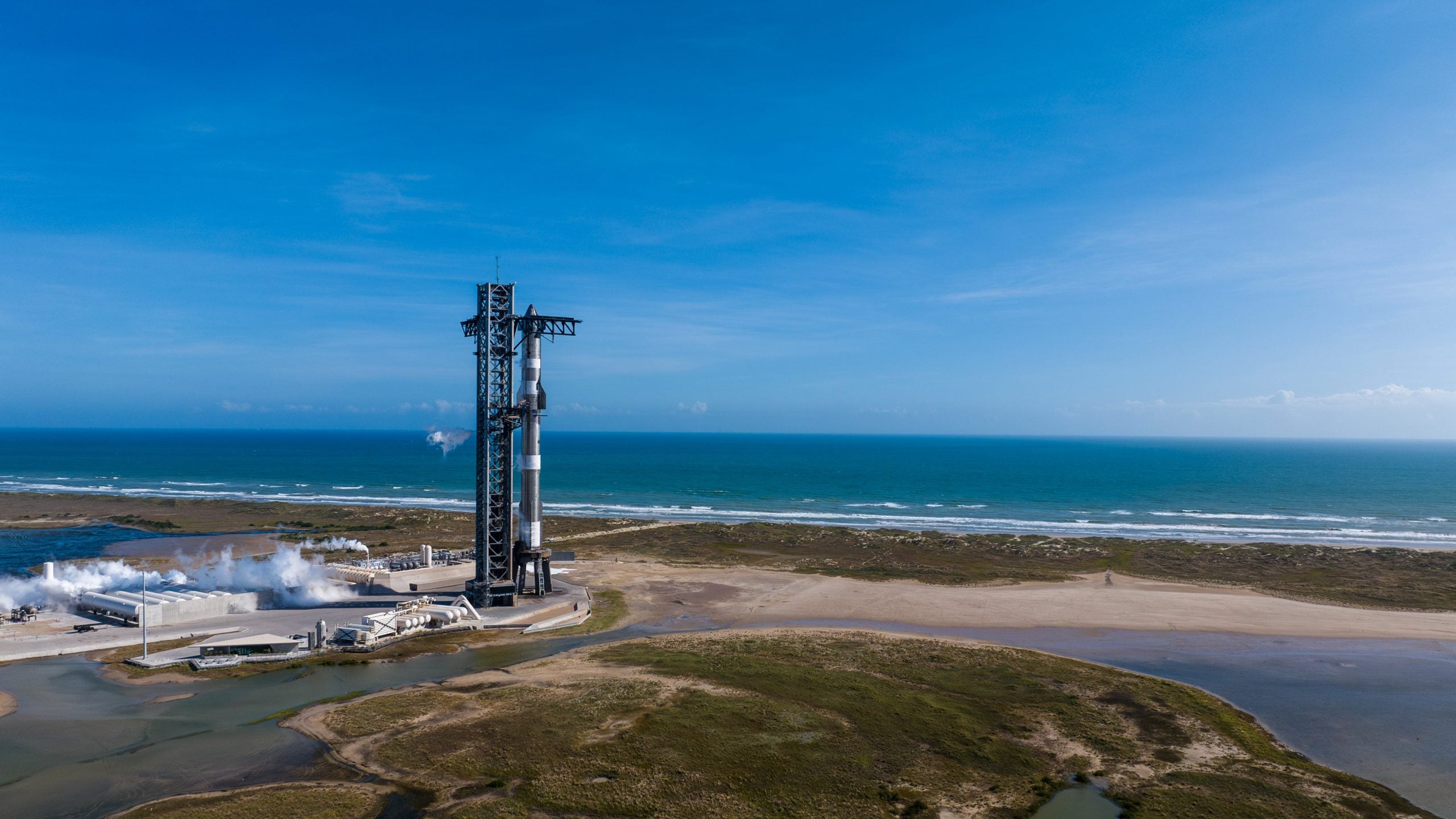SAKAKA, Saudi Arabia – A rural region of northern Saudi Arabia was blanketed by hailstones, giving the desert landscape a rare coating of white and mimicking a wintry wonderland.Saudi Arabia’s National Center for Meteorology reported the weather event unfolded on Nov. 2, in the Al-Jouf region near the Jordanian border.Photos from the desert showed the ground covered in the ice with vehicles and even camels having to venture through the frozen precipitation.According to the country’s national weather service, the region receives most of its precipitation between October and May, which sets the area up for the spring growing season.”The Al-Jouf Region is known for its seasonal wildflowers in spring, including lavender, daisies, and a variety of aromatic plants,” the Saudi Press Agency said in a statement.AT LEAST 1,300 RELIGIOUS PILGRIMS KILLED BY SAUDI ARABIA HEAT WAVEAccording to nearby observation data, temperatures likely peaked in the 70s and 80s on the day the hailstorm occurred, ruling out snowfall.There was no reported damage from the thunderstorms, but meteorologists warned about the potential of flooding.Some people appeared to have mistakenly referred to the hailstones as snow, which typically only occurs during the winter months.Occasions of hail are considered to be more common in the northern and western parts of the country due to the available cooler air aloft.Hail forms when strong wind updrafts, typically found in the core of thunderstorms, carry raindrops upward. These winds push the raindrops into the colder, upper regions of the storm, where they freeze into hailstones.As the hail begins to fall, they gather additional raindrops on their way through the atmosphere. If they encounter additional updrafts, the hailstones are blown back into the clouds, where additional layers of water freeze.DUBAI FLOODING PROMPTS ORDERS TO ‘STAY AT HOME’ AFTER CITY GETS 2 YEARS OF RAIN IN ONE DAYNearby Jabal Al-Lawz mountain, located in the northwestern part of Saudi Arabia, has an elevation of 8,460 feet and occasionally supports snowfall.According to forecasters, sights of snow occur from December through February, but due to the terrain, the snowfall melts relatively quickly.The Kingdom is said to be building a state-of-the-art ski resort in the Tabuk Mountains, which will rely on man-made snowfall during the colder months.
/
November 13, 2024
Photos: Hail blankets Saudi Arabian desert creating winter-like landscape







